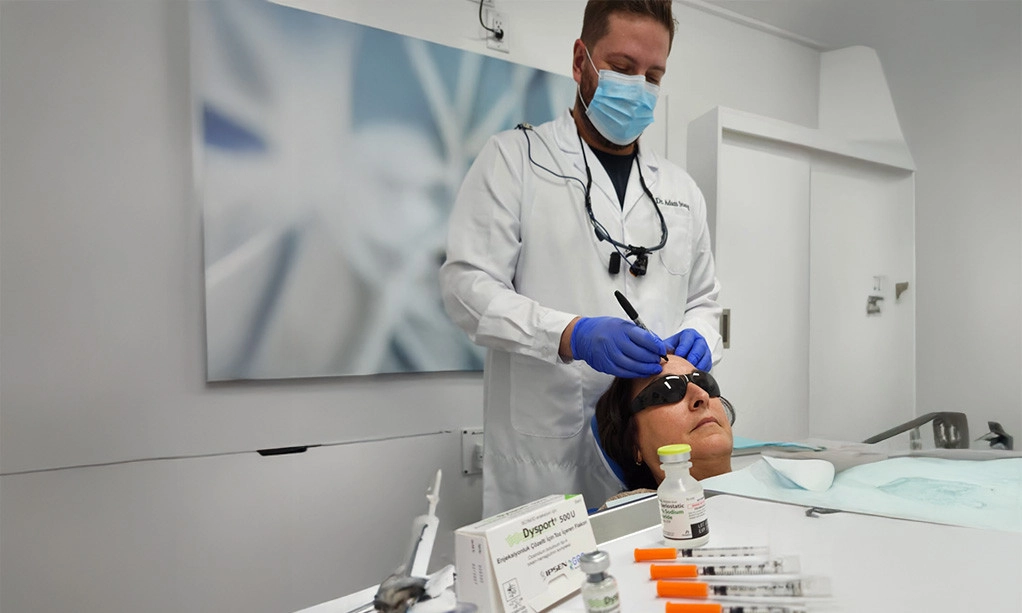
Botox (Therapeutic & Cosmetic)
Most people associate Botox with cosmetic touch-ups, softening lines, smoothing out the skin. But in a dental setting, its role is often more functional than aesthetic. For patients dealing with chronic clenching, facial tension, or discomfort in the jaw, Botox offers a way to ease muscle overactivity without surgery or long-term medication.
Addressing Jaw Pain and TMJ Symptoms
If you’ve ever woken up with a sore jaw or constant tightness in your face, you’re not alone. For many, it’s the result of muscles working overtime — often tied to stress, unconscious grinding, or TMJ dysfunction. In these cases, carefully placed Botox injections can help relax those overworked muscles. It doesn’t freeze the area or take away movement, but it does calm the intensity. Most people start noticing relief within a few days, sometimes even sooner.
Preventing the Effects of Bruxism
Bruxism — the habit of grinding or clenching teeth — can wear down enamel and lead to bigger problems over time. While nightguards are often the first line of defense, they don’t always stop the underlying muscle force. That’s where Botox may help. By softening the bite pressure without affecting speech or chewing, it gives the jaw a break it often doesn’t get otherwise.
Cosmetic Benefits with a Natural Touch
Apart from its medical uses, Botox can also be used to reduce fine lines around the lips, eyes, and forehead. Additionally, it's frequently utilised to correct a "gummy smile" by modifying the movement of the top lip during expression. Rather than drastically altering look, the results are usually modest and intended to accentuate natural traits.
The Process and What to Expect
No prior preparation is required. The actual process just takes a few minor pinches at the injection sites and is frequently completed in less than 30 minutes. Over the following several days, the effect intensifies progressively, and within a week, the full effects typically become apparent. Most people see benefits for three to six months before having a touch-up, though this varies from person to person.
Safety and Precision
A thorough understanding of facial anatomy is essential for successful therapy. Dental practitioners have specialised training in this field, particularly in relation to the oral and maxillofacial regions. Botox is regarded as safe and well-tolerated when used appropriately. Mild and transient adverse effects, such slight swelling or soreness at the injection site, are typical.
Who Might Consider Botox?
This treatment may be appropriate for:
- Adults with frequent jaw pain, muscle tension, or TMJ symptoms
- Individuals dealing with chronic teeth grinding or clenching
- Patients seeking gentle cosmetic improvements, such as softening facial lines or reducing a gummy smile
- Thinking about whether Botox is the right choice for your needs?
Interested in exploring it further?
There’s no pressure. Just a conversation to see if this might be the right fit for your situation.

